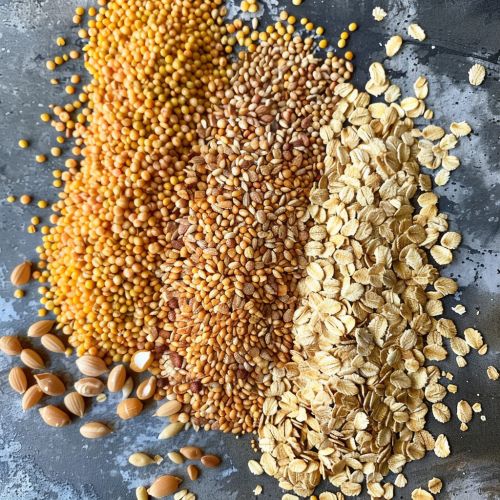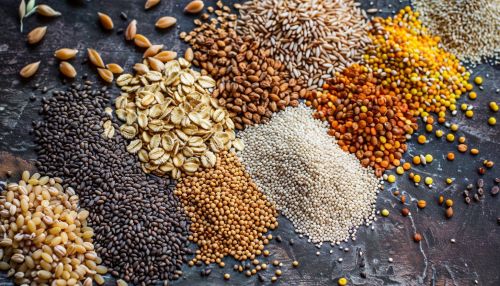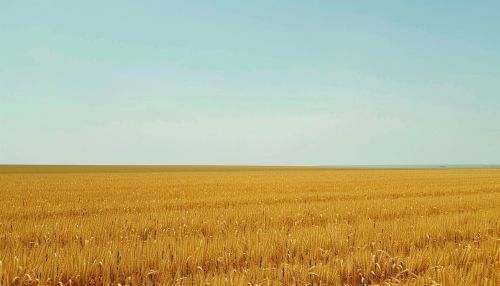Cereal
Introduction
Cereal is a term used to describe the edible seeds or grains of plants belonging to the grass family, Gramineae. These grains are cultivated globally and form a significant part of human diet due to their high nutritional content. Cereal grains are rich sources of proteins, vitamins, minerals, and carbohydrates, making them a staple food in many countries.


History
The cultivation of cereal grains dates back to the Neolithic era, around 10,000 years ago. Early civilizations, such as those in the Fertile Crescent, began to grow and harvest grains like wheat and barley, marking the transition from nomadic hunting and gathering to settled agriculture. This shift had a profound impact on human societies, leading to the development of complex civilizations and the advancement of technology.
Types of Cereals
There are several types of cereals, each with its own unique characteristics and nutritional profile. Some of the most commonly consumed cereals include:
Wheat
Wheat is one of the most widely grown and consumed cereals in the world. It is a primary source of flour, which is used to make a variety of food products such as bread, pasta, and pastries. Wheat is rich in proteins, particularly gluten, which gives dough its elasticity and strength.
Rice
Rice is a staple food for more than half of the world's population, particularly in Asia. It is consumed in various forms, from whole grain to white rice, and is used in a wide range of dishes. Rice is an excellent source of energy due to its high carbohydrate content.
Corn
Corn (Maize) is native to the Americas and is one of the most versatile cereals. It can be consumed directly as a vegetable when it is young and tender, or it can be dried and ground into flour for making bread, tortillas, and other food products. Corn is also used extensively in the production of animal feed and biofuels.
Oats
Oats are a nutritious cereal grain known for their high fiber content, particularly beta-glucan, a type of soluble fiber that can help lower cholesterol levels. Oats are commonly consumed as oatmeal or porridge and are also used in baking.
Barley
Barley is one of the oldest cultivated cereals and was a staple food in ancient civilizations. Today, it is used mainly for animal feed and in the production of malt for the brewing industry. However, barley is also consumed as a whole grain and is used in soups and stews.
Cultivation and Production
Cereal cultivation involves a series of processes, from land preparation and sowing to harvesting and post-harvest handling. The specific practices vary depending on the type of cereal, the local climate, and the farming system used.


Processing and Uses
Cereal grains undergo various processing steps to make them suitable for consumption. These steps may include cleaning, hulling, milling, and cooking. The processed grains are used in a wide range of food products, from breakfast cereals and bread to pasta and pastries. In addition to food, cereals are also used in the production of alcoholic beverages, animal feed, and industrial products like biofuels and bioplastics.
Nutritional Value and Health Benefits
Cereals are a rich source of carbohydrates, which provide energy for the body. They also contain significant amounts of dietary fiber, which aids in digestion and can help prevent certain health conditions like heart disease and diabetes. Cereals are also a good source of vitamins and minerals, including B vitamins, iron, and zinc.
Despite their nutritional benefits, cereals also contain anti-nutritional factors like phytic acid, which can inhibit the absorption of minerals in the body. Processing methods like soaking, sprouting, and fermenting can help reduce these anti-nutritional factors and improve the nutritional quality of cereals.
Challenges and Future Perspectives
Cereal production faces several challenges, including climate change, pests and diseases, and post-harvest losses. There is a need for sustainable farming practices and improved crop varieties to ensure food security in the face of these challenges. Advances in technology and research are also crucial for enhancing the nutritional quality of cereals and exploring new uses for these versatile grains.
